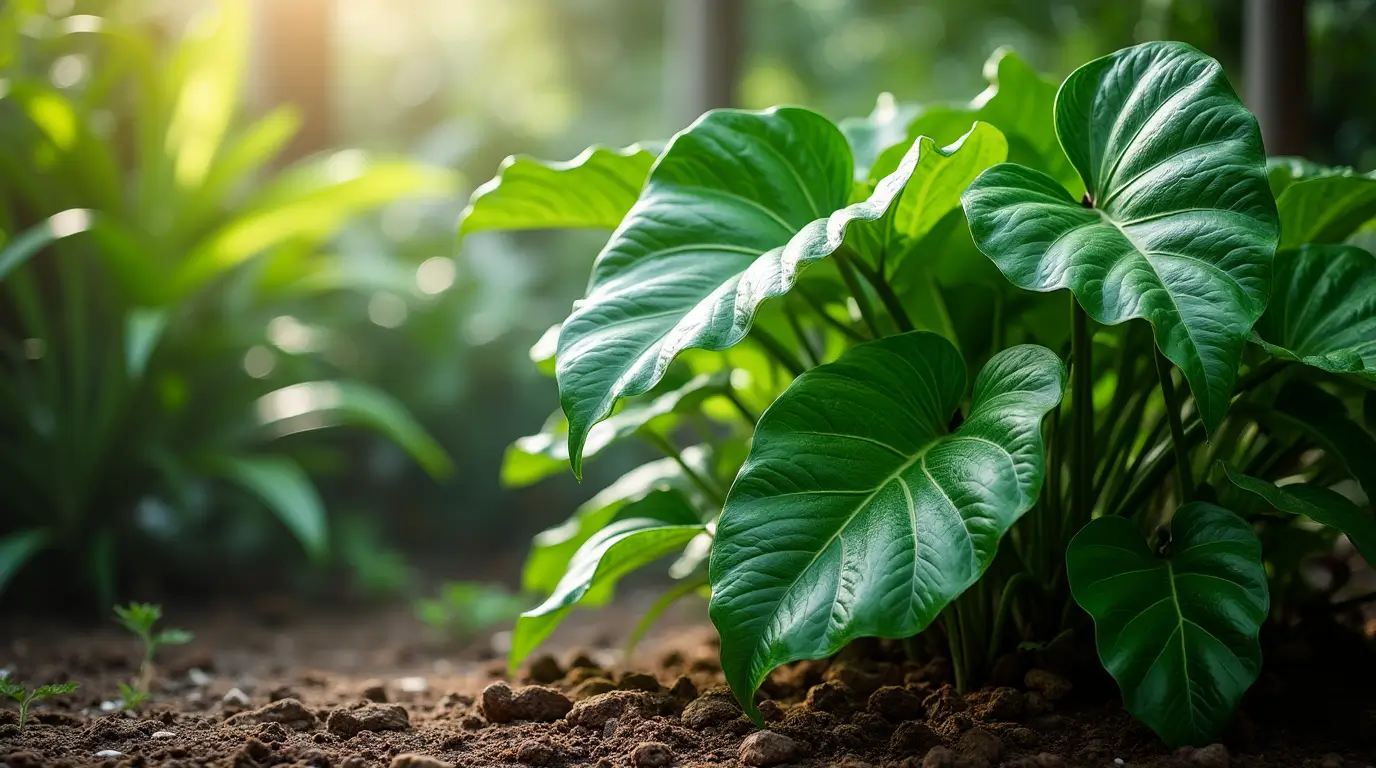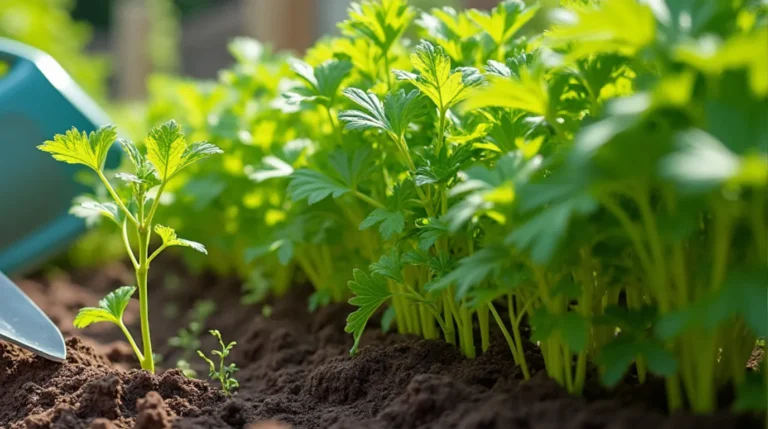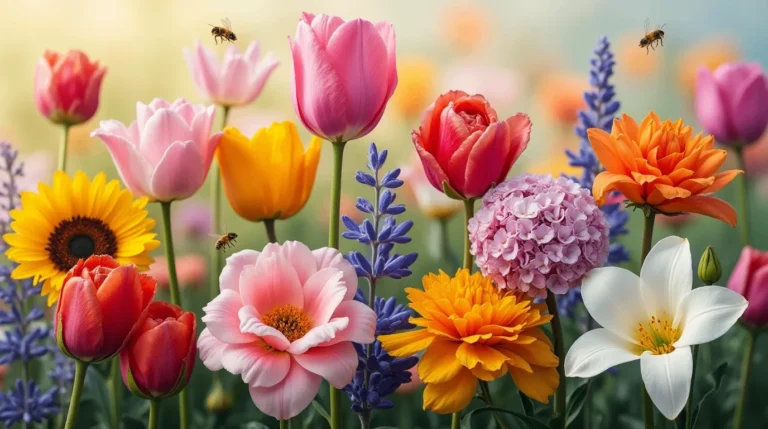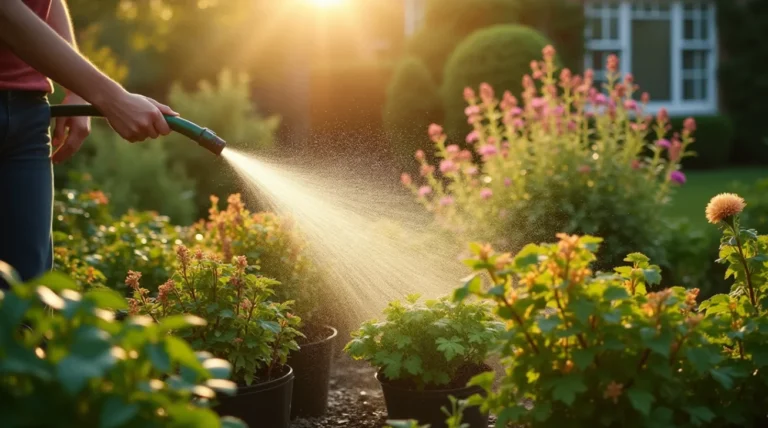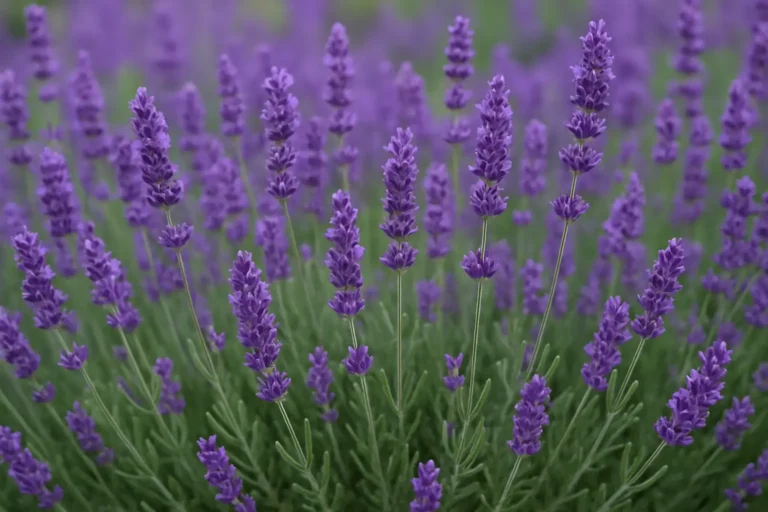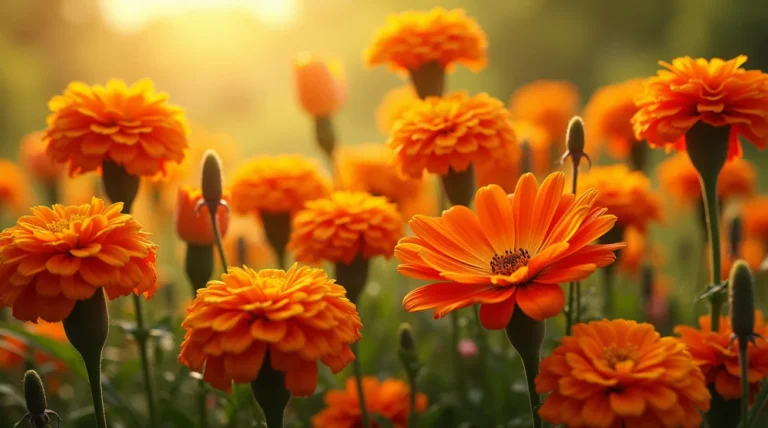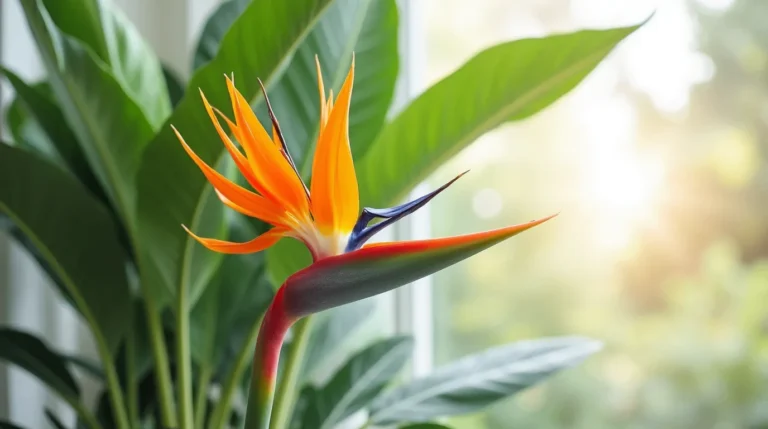Elephant Ears Plant 101: How To Grow And Caring, Tropical Leaves
Elephant ear plants are known for their large, tropical leaves that look like elephant ears. They make great statement pieces in gardens and homes, bringing a tropical feel to any space. This guide will help you grow and care for these plants, from choosing the right type to keeping them looking lush all year.

Learn how to make your garden pop with elephant ear plant care basics. Find out about soil, sunlight, and how to fix common problems. These plants are easy to care for, turning any space into a lush, exotic oasis.
Key Takeaways
- Elephant ear plants are known for their large, heart-shaped tropical foliage plant leaves.
- Topics include variety selection, soil preparation, pest prevention, and seasonal care tips.
- These plants adapt to both indoor and outdoor settings with proper attention to light and moisture.
- Overwintering strategies ensure tubers survive cold months for spring revival.
- Creative landscaping ideas showcase how to use their bold shapes in garden designs.
Introduction to Elephant Ears Plants
Elephant ears and plants grab the attention of gardeners with their big, bold leaves. These tropical foliage plants come from families like Alocasia and Colocasia. They make any landscape look striking.
What Are Elephant Ears Plants?
These plants are known as Alocasia, Colocasia, and Xanthosoma. Their leaves can grow up to three feet long. This makes them really stand out.
Alocasia species like Alocasia amazonica love shade. On the other hand, Colocasia, such as Colocasia esculenta, do well in wetter soils. They all have heart-shaped leaves that are their signature feature.

Origins and Natural Habitat
These plants come from Southeast Asia, the Pacific Islands, and tropical America. They grew in humid, warm places. In the wild, they love rainforests and riverbanks.
They need rich soil and indirect light to thrive in US gardens. This is because of their natural habitat.
Why They’re Popular in American Gardens
Gardeners in the US love elephant ears and plants for their tropical look. They add drama to any space, from containers to garden beds. They do well from Florida to the Pacific Northwest.
They are easy to care for once they’re established. This makes them a favorite for both indoor and outdoor spaces.
Types of Elephant Ears Plant Varieties
It’s key to know the difference between alocasia and colocasia for gardeners. These two types of elephant ears plants look different and need different care.

Alocasia vs. Colocasia: Understanding the Differences
Alocasia leaves point up, with shiny surfaces and deep veins. They like dry soil and indirect light. On the other hand, colocasia leaves hang down, with matte surfaces, and need moist soil. Some can even handle standing water. Both grow from tubers but have different leaf directions and water needs.
“Leaf direction and root preferences are nature’s clues to their identity,” noted a 2023 plant care guide.
Popular Cultivars and Their Characteristics
| Cultivar | Leaf Features | Ideal Conditions | Max Height |
|---|---|---|---|
| Colocasia ‘Black Magic’ | Jet-black leaves with purple stems | Partial shade, wet soil | 3–5 feet |
| Alocasia ‘Polly’ | Green arrow-shaped leaves with white veins | Bright, indirect light; moderate watering | 1–2 feet |
Choosing the Right Variety for Your Space
- For shady spots: opt for colocasia varieties like ‘Black Magic.’
- Small spaces suit compact alocasia ‘Polly.’
- Moist areas benefit from Colocasia’s water tolerance.
Choose a plant that fits your garden’s conditions for the best growth.
Optimal Growing Conditions for Lush Tropical Foliage
Elephant ears plants do best in the right spot. These tropical foliage plants need specific light, temperature, and soil to grow well. With the right care, they produce big, bright leaves and grow strong.

Light: Most types prefer indirect sunlight. Shade helps prevent leaf burn. If the soil is moist, they can handle some sun. The morning sun is better than the strong afternoon sun.
Temperature: Keep them between 65°F and 85°F. Frost or cold below 50°F can harm them. Move potted plants indoors when it gets cold.
Soil: Use rich, well-drained soil with organic matter. A mix of potting soil and compost keeps moisture right. Keep the pH between 6.0 and 7.0 for best nutrient absorption.
Humidity: High humidity makes leaves bigger. Mist them daily or put pots on pebble trays with water. Grouping plants also increases moisture.
By combining these factors, you create the perfect environment. Healthy roots and proper care lead to the giant leaves plant look. Adjust conditions with the seasons for growth all year.
Planting Elephant Ears: Step-by-Step Guide
Learning how to plant your elephant ears plant is key to its success. Follow these steps to create a lush environment, whether in your garden or containers.

When to Plant Elephant Ears
Timing is everything for outdoor plants. Wait until the soil warms up to 65°F, about 2–3 weeks after the last spring frost. In USDA zones 8–11, plant in the spring. If you live in the north, start tubers indoors 6–8 weeks before the final frost.
Preparing the Soil for Maximum Growth
- Loosen soil 12 inches deep to improve drainage
- Mix in 2–3 inches of compost or well-rotted manure
- Test soil pH; aim for 6.0–7.5 using lime or sulfur if needed
For containers, use a premium potting mix like Miracle-Gro Moisture Control. Add perlite for better airflow.
Planting Techniques for Bulbs and Potted Plants
- Bury tubers 2–4 inches deep, growth bud side up
- Space bulbs 1–2 feet apart for smaller varieties
- Container plants: set at same soil level as nursery pots
Water immediately after planting to settle the soil around the roots.
Spacing Requirements for Different Varieties
Space plants 2–6 feet apart, depending on their size. For example:
- Alocasia ‘Black Coral’: 2–3 feet spacing
- Colocasia ‘Hilo Moon’: 4–5 feet spacing
Proper spacing prevents overcrowding and disease risks.
Indoor Elephant Ear Plant Care
Bring the tropics indoors with proper care for alocasia and other Elephant Ears varieties. Choose compact options like Alocasia ‘Polly’ or Alocasia Amazonica for spaces with limited room. These indoor plant favorites thrive in bright indirect light near east-facing windows, avoiding harsh midday sun.

| Condition | Requirement |
|---|---|
| Light | Bright indirect light |
| Humidity | 60-70% (use pebble trays or misting) |
| Temperature | 65°F–80°F |
| Watering | Keep soil moist but never waterlogged |
Use pots with drainage holes to prevent root rot. Mist leaves weekly to replicate tropical humidity. Watch for spider mites—wipe leaves with soapy water if spotted. In winter, reduce watering but maintain warmth. Group with other humidity-loving plants to create a mini ecosystem. Proper care turns alocasia into a stunning indoor focal point year-round.
Outdoor Cultivation in Various Climate Zones
Elephant Ears do well as outdoor plants but need adjustments for different climates. Gardeners should tailor care to local conditions for lush growth all year.
Growing Elephant Ears in Warm Climates
In USDA zones 8-11, these plants thrive outdoors all year. Plant in partial shade to avoid leaf scorch in hot weather. Water deeply during dry periods, especially in Florida and the Gulf Coast.
Keep an eye on growth, as some varieties can spread fast. Trim rhizomes to control their spread.
Managing Elephant Ears in Cooler Regions
In zones 3-7, treat them as annuals or overwinter them. Grow in containers to move indoors before frost. For zone 7 gardeners, mulch heavily around roots during winter.
Plant outdoors only after all frost risk passes in spring.
Seasonal Considerations for Year-Round Care
- Spring: Plant after last frost. Apply slow-release fertilizer.
- Summer: Water weekly. Shield from extreme heat with temporary shade cloth.
- Fall: Reduce water as growth slows. Prepare containers for winter storage.
- Winter: Store dormant tubers in cool, dry basements or greenhouses.
Watch for aphids in spring and slugs in wet seasons. Prune damaged leaves quickly to stop disease spread.
Water and Fertilization Requirements
Proper watering and feeding make caring for elephant ears easy. These tropical plants do well with the right care. They’re great for beginners because they’re easy to care for.
Creating the Ideal Watering Schedule
Colocasia varieties like wet soil and can do well in water gardens. Alocasia prefers moist but well-drained soil. Here are some tips:
- Water container plants every 3-5 days in summer; reduce in winter
- Outdoor plants need 1-2 inches of water weekly during dry spells
- Use your finger to check the top 2 inches of soil—the moisture level should feel like a wrung-out sponge
Fertilizer Types and Application Methods
Feed growing plants with a balanced 10-10-10 fertilizer. Dilute it to half-strength. Choose:
- Nitrogen-rich options (fish emulsion or blood meal) for leaf growth
- Slow-release pellets applied every 6 weeks during spring and summer
Stop fertilizing 6 weeks before frost to prepare for dormancy.
Signs of Over and Under Watering
| Issue | Symptoms | Action |
|---|---|---|
| Overwatering | Yellowing leaves, soft stems, root rot odor | Let the soil dry completely before watering; report if roots are mushy |
| Underwatering | Crispy leaf edges, drooping foliage | Let soil dry completely before watering; report if roots are mushy |
Keeping a balance ensures these low-maintenance plants stay vibrant. They don’t need constant care.
Managing the Giant Leaves of Elephant Ears
Keeping the giant leaves plant healthy is key. Regular cleaning helps keep the leaves dust-free and pest-free. Use a damp cloth or soft water to clean without causing damage.
- Pruning Damaged Growth: Cut off yellow or torn leaves at the base with clean shears. This stops diseases and promotes new growth.
- Supporting Large Foliage: Use bamboo poles and soft ties to hold up floppy leaves. Place stakes before leaves get too big.
- Preventing Sun Scorch: Use shade cloth to protect leaves from too much sun. Turn pots weekly for even sunlight.
- Maximizing Leaf Size: Feed the plant balanced fertilizer every six weeks when it’s growing. Full sun helps leaves grow bigger.
Check leaves every week for damage. Indoor plants need 60-75% humidity. Trimming overgrown leaves is okay, but be careful not to harm the plant. With the right care, leaves can grow up to 3 feet long. Always wear gloves when handling the plant’s sap to avoid skin irritation.
Common Pests and Diseases of Elephant Ears Plants
Even the most vibrant tropical foliage plants like the elephant ears can face threats from pests and diseases. Regular monitoring helps spot issues early, preserving the plant’s striking foliage.
Identifying Pest Infestations
Common pests include aphids, spider mites, and slugs. Look for sticky residue (aphids), yellow speckles (spider mites), or slime trails (slugs). Early signs often appear on
Disease Prevention and Treatment
- Leaf Spot: Brown spots spread by moisture. Prune affected areas and avoid overhead watering.
- Root Rot: Overwatering causes mushy roots. Ensure pots have drainage holes and use well-aerated soil.
- Powdery Mildew: White patches on leaves signal this fungal issue. Increase airflow and apply sulfur-based sprays.
Natural and Chemical Control Methods
Start with organic options: mix neem oil with water for spraying, or use diatomaceous earth for slugs. For severe cases, systemic insecticides may be necessary. Always follow label instructions for chemical treatments.
Adopt integrated pest management (IPM) to balance safety and effectiveness. Regularly clean garden tools and remove debris to disrupt pest cycles. Healthy plants resist problems better—maintain proper soil moisture and light as a first defense.
Propagation Techniques for Expanding Your Collection
Grow more elephant ears plant with these easy methods. You can create new plants from divisions, seeds, or offsets. This way, you save money and can share your favorite plants with others.
Division is the quickest method. In early spring, use clean tools to split the rhizomes. Make sure each section has a growth bud. Alocasia varieties have soft rhizomes, while Colocasia tubers are tougher.
Replant the divisions in fresh soil for the best growth.
For those with indoor plants, container division is best. Remove the plant from its pot, separate the shoots, and repot each in new soil. Water lightly and keep it out of direct sunlight until new growth shows.
| Method | Steps | Best For |
|---|---|---|
| Division | Split rhizomes/offsets in spring | Quick results, all varieties |
| Seeds | Stratify seeds, sow in peat, keep moist | Unique hybrids, patient gardeners |
| Offsets | Remove shoots from base, pot individually | Indoor plants, easy success |
Seeds take longer but bring new varieties. Collect mature seeds, store them in cold for 2-4 weeks, then sow in peat mix. Keep the soil moist until sprouts appear. New plants need gentle care.
Water them sparingly for two weeks, then water regularly once roots grow. Bright, indirect light helps indoor varieties recover faster.
Overwintering Strategies for Elephant Ears Plants
Gardeners in colder areas can keep their elephant ears plant healthy. By following these steps, you can enjoy lush plants every spring. You won’t need to replant every year.
| Step | Action | Timing |
|---|---|---|
| 1 | Lift tubers after first light frost | Early November |
| 2 | Cure tubers in shaded area for 2 weeks | Mid-November |
| 3 | Store in peat moss at 50-60°F | December-March |
| 4 | Check monthly for mold/dryness | Winter months |
Container plants can stay inside in unheated garages. Water them once a month. Give them indirect light.
In zones 8-10, add 6″ of mulch after frost. Start reviving plants 6-8 weeks before the last frost. Soak tubers for 24 hours, then plant in fresh mix. Move them outside when it’s warm enough.
- Use breathable mesh bags for storage
- Discard shriveled or soft tubers
- Repot in larger containers yearly
Good overwintering care makes plants last longer and grow bigger. Follow this guide to keep your outdoor plants looking great all year.
Creative Landscaping with Elephant Ear Shaped Leaves
Transform ordinary areas into tropical wonders with elephant ear-shaped leaves from giant leaves plants. These plants stand out as focal points in any landscape, big or small. Mix giant leaves plant types with plants that cascade, like purple fountain grass or chartreuse sweet potato vine. This creates a striking contrast in texture.
- Water garden accents: Place colocasia varieties along pond edges for stunning reflections
- Modern minimalist displays: Place single plants in sleek pots as living art
- Seasonal arrangements: Use potted plants to create temporary living walls for events
| Theme | Plant Pairings |
|---|---|
| Tropical retreat | Bird of paradise + variegated caladium |
| Asian garden | Japanese maple + black-leaved alocasia |
| Modern urban | Silver-leafed xanthosoma + succulent drifts |
Place plants where they can be seen well—near doors or seating. Keep 3-5 feet between plants to avoid crowding. For tight spots, train vines up trellises to add height. These plants also look great in flower arrangements, bringing a tropical touch to any bouquet.
Conclusion: Enjoying Your Low-Maintenance Tropical Paradise
Elephant ears plant brings drama without needing constant care. It’s a low maintenance plant that shows off bold leaves with just sunlight and good soil. These plants fit well in containers or garden beds, even in U.S. climates, proving lush beauty doesn’t need daily work.
Keeping a simple care schedule helps, matching tasks like spring planting with the season. Start with easy varieties like ‘Black Magic’ or ‘Tapestry’ before trying rarer ones. These plants do well in zones 8–11 but can also thrive indoors in colder areas.
Share your gardening adventures through photos or forums to meet other enthusiasts. As you get more confident, try new varieties or creative garden designs. With the right care, your garden will be a lively tropical getaway. Remember, patience and good soil are key to lasting beauty. Let these plants turn your space into a vibrant, exotic haven with little effort.
FAQ
What are Elephant Ears plants?
Elephant Ears plants are mainly Alocasia and Colocasia. They have big, heart-shaped leaves that look like an elephant’s ears. These plants are loved for their bold leaves and are great for indoor and outdoor spaces.
How do I know which variety of Elephant Ears to choose for my garden?
Pick a variety based on your garden’s conditions. Alocasia likes dry soil and sunny spots. Colocasia prefers wetter soil and more moisture. Think about size, light, and look before choosing.
Are Elephant Ears plants easy to care for?
Yes, they are easy to care for once they’re settled. They need rich soil, enough water, and some shade. With these basics, they need little care.
What’s the best way to plant Elephant Ears?
Plant them after the last frost when it’s warm (at least 65°F). Use good soil and plant at the right depth. Make sure to space them right based on their size.
How much water do Elephant Ears need?
They like moist soil, especially Colocasia. Water them based on the weather and season. Make sure the soil drains well to avoid root rot.
Can Elephant Ears be grown indoors?
Yes, some small varieties like Alocasia ‘Polly’ do well indoors. They need bright, indirect light and consistent moisture and humidity.
How do I manage pests and diseases in Elephant Ear plants?
Check plants often for pests like aphids and spider mites. Use natural treatments like neem oil or insecticidal soap. Good spacing and cleanliness can prevent diseases like root rot and powdery mildew.
What are the best strategies for overwintering Elephant Ears plants?
If they’re not frost-hardy, dig up the tubers and store them in a cool, dry place. For container plants, bring them inside and water less until spring.
How can I create a tropical landscaping design using Elephant Ears?
Use Elephant Ears as highlights in your garden. They look good with colorful plants and near water features. Remember their size when planning your garden.
Do Elephant Ears require any special soil conditions?
They do best in rich, draining soil that keeps moisture but doesn’t get too wet. A pH between 6.0 and 7.0 is best for their growth.

